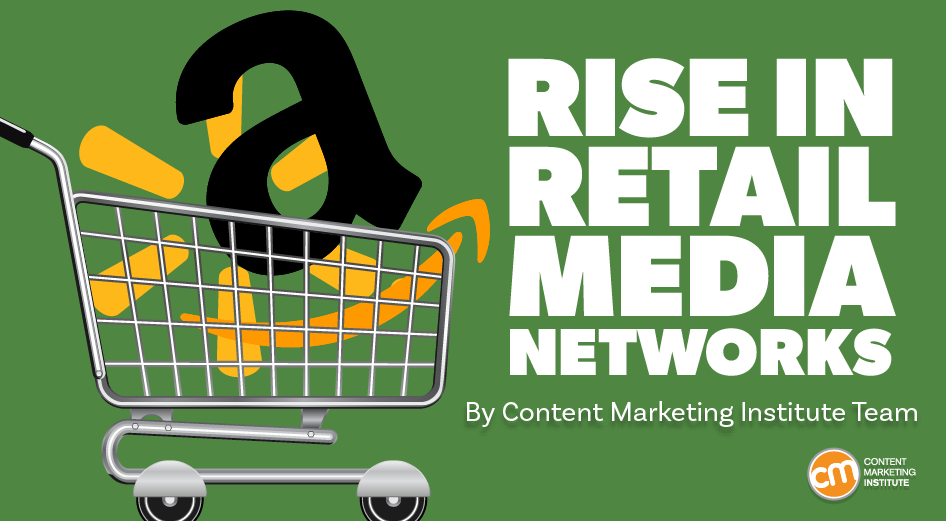
As LL Cool J might say, “Don’t call it a comeback. It’s been here for years.”
Paid advertising is alive and growing faster in different forms than any other marketing method.
Magna, a media research firm, and GroupM, a media agency, wrapped the year with their ad industry predictions – expect big growth for digital advertising in 2024, especially with the pending US presidential political season.
But the bigger, more unexpected news comes from the rise in retail media networks – a relative newcomer in the industry.
Watch CMI’s chief strategy advisor Robert Rose explain how these trends could affect marketers or keep reading for his thoughts:
GroupM expects digital advertising revenue in 2023 to conclude with a 5.8% or $889 billion increase – excluding political advertising. Magna believes ad revenue will tick up 5.5% this year and jump 7.2% in 2024. GroupM and Zenith say 2024 will see a more modest 4.8% growth.
Robert says that the feeling of an ad slump and other predictions of advertising’s demise in the modern economy don’t seem to be coming to pass, as paid advertising not only survived 2023 but will thrive in 2024.
What’s a retail media network?
On to the bigger news – the rise of retail media networks. Retail media networks, the smallest segment in these agencies’ and research firms’ evaluation, will be one of the fastest-growing and truly important digital advertising formats in 2024.
GroupM suggests the $119 billion expected to be spent in the networks this year and should grow by a whopping 8.3% in the coming year. Magna estimates $124 billion in ad revenue from retail media networks this year.
“Think about this for a moment. Retail media is now almost a quarter of the total spent on search advertising outside of China,” Robert points out.
You’re not alone if you aren’t familiar with retail media networks. A familiar vernacular in the B2C world, especially the consumer-packaged goods industry, retail media networks are an advertising segment you should now pay attention to.
Retail media networks are advertising platforms within the retailer’s network. It’s search advertising on retailers’ online stores. So, for example, if you spend money to advertise against product keywords on Amazon, Walmart, or Instacart, you use a retail media network.
But these ad-buying networks also exist on other digital media properties, from mini-sites to videos to content marketing hubs. They also exist on location through interactive kiosks and in-store screens. New formats are rising every day.
Retail media networks make sense. Retailers take advantage of their knowledge of customers, where and why they shop, and present offers and content relevant to their interests. The retailer uses their content as a media company would, knowing their customers trust them to provide valuable information.
Think about these 2 things in 2024
That brings Robert to two things he wants you to consider for 2024 and beyond. The first is a question: Why should you consider retail media networks for your products or services?
Advertising works because it connects to the idea of a brand. Retail media networks work deep into the buyer’s journey. They use the consumer’s presence in a store (online or brick-and-mortar) to cross-sell merchandise or become the chosen provider.
For example, Robert might advertise his Content Marketing Strategy book on Amazon’s retail network because he knows his customers seek business books. When they search for “content marketing,” his book would appear first.
However, retail media networks also work well because they create a brand halo effect. Robert might buy an ad for his book in The New York Times and The Wall Street Journal because he knows their readers view those media outlets as reputable sources of information. He gains some trust by connecting his book to their media properties.
Smart marketing teams will recognize the power of the halo effect and create brand-level experiences on retail media networks. They will do so not because they seek an immediate customer but because they can connect their brand content experience to a trusted media network like Amazon, Nordstrom, eBay, etc.
The second thing Robert wants you to think about relates to the B2B opportunity. More retail media network opportunities for B2B brands are coming.
You can already buy into content syndication networks such as Netline, Business2Community, and others. But given the astronomical growth, for example, of Amazon’s B2B marketplace ($35 billion in 2023), Robert expects a similar trend of retail media networks to emerge on these types of platforms.
“If I were Adobe, Microsoft, Salesforce, HubSpot, or any brand with big content platforms, I’d look to monetize them by selling paid sponsorship of content (as advertising or sponsored content) on them,” Robert says.
As you think about creative ways to use your paid advertising spend, consider the retail media networks in 2024.
HANDPICKED RELATED CONTENT:
Cover image by Joseph Kalinowski/Content Marketing Institute




